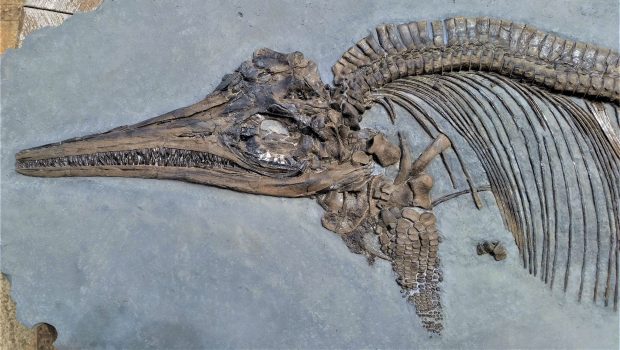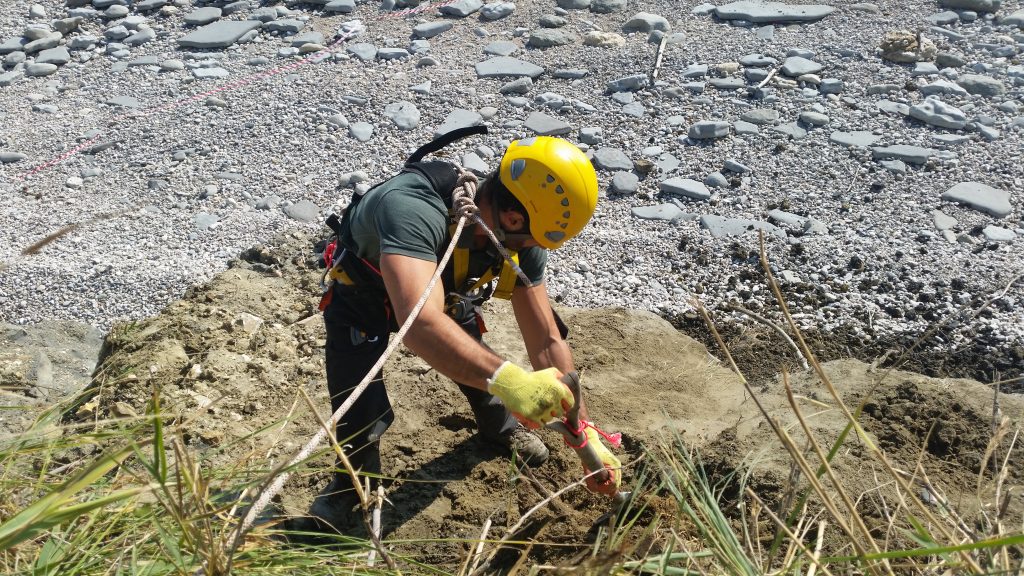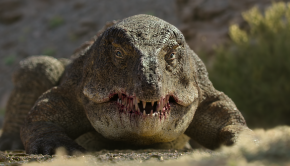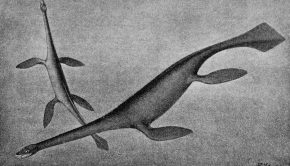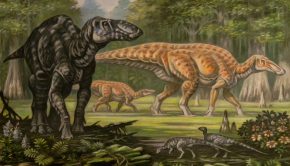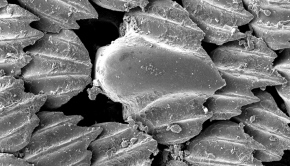Episode 85: Ichthyosaurs
Ichthyosaurs are large marine reptiles that existed for most of the Mesozoic Era. The most familiar forms superficially represent dolphins, but some earlier ichthyosaurs were more eel like. They could attain huge proportions, with some genera reaching up to 21m long. They were active predators feeding on belemnite, fishes and even other marine reptiles!
In this episode, we talk to Dr Ben Moon and Fiann Smithwick, researchers at the University of Bristol, UK. Both have recently been involved in producing a documentary with the BBC entitled ‘Attenborough and the Sea Dragon’, so we have used this as an opportunity to discuss in great detail what ichthyosaurs are and get insights into the kind of work required to produce such a documentary.
Podcast: Download (Duration: 1:09:31 — 96.4MB)
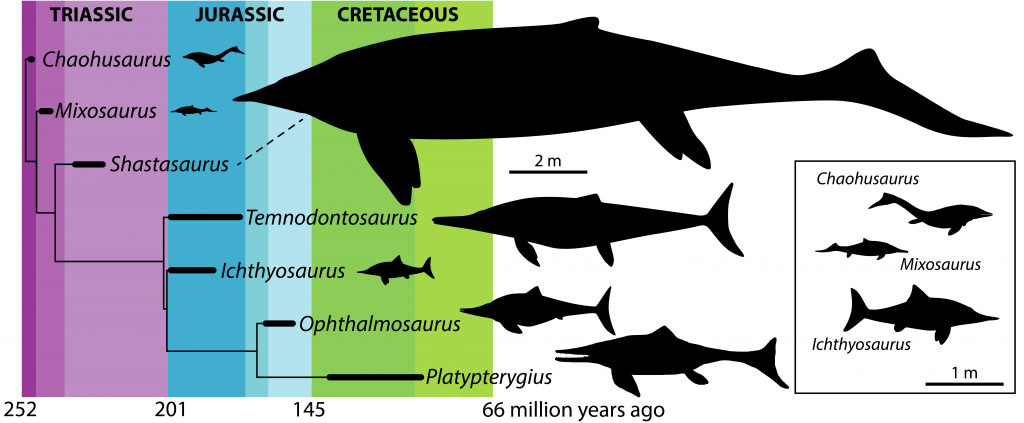
A simplified phylogeny of ichthyosaurs showing the best known, and most characteristic genera. The first ichthyosaurs evolved in the Early Triassic (e.g. Chaohusaurus), but became more diverse, and both small and huge in the Middle and Late Triassic (e.g. Mixosaurus and Shastasaurus). In the Jurassic and Cretaceous, many ichthyosaurs had a similar, fish-like form, but maintained a high diversity of sizes and niches. CC BY 3.0 authors Benjamin Moon, Dmitry Bogdanov, T. Michael Keesey, Gareth Monger, and Zimices.
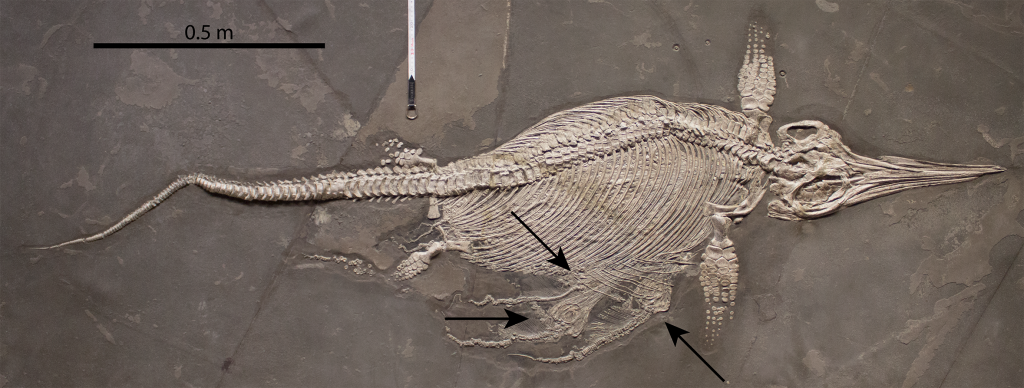
A wonderfully complete specimen of the ichthyosaur Stenopterygius from the Early Jurassic (~180 million years ago) of Holzmaden, SW Germany. This specimen includes eleven unborn young. Three are indicated by arrows below the rib cage of the adult, and would have been ejected there after death. Image by Benjamin Moon.
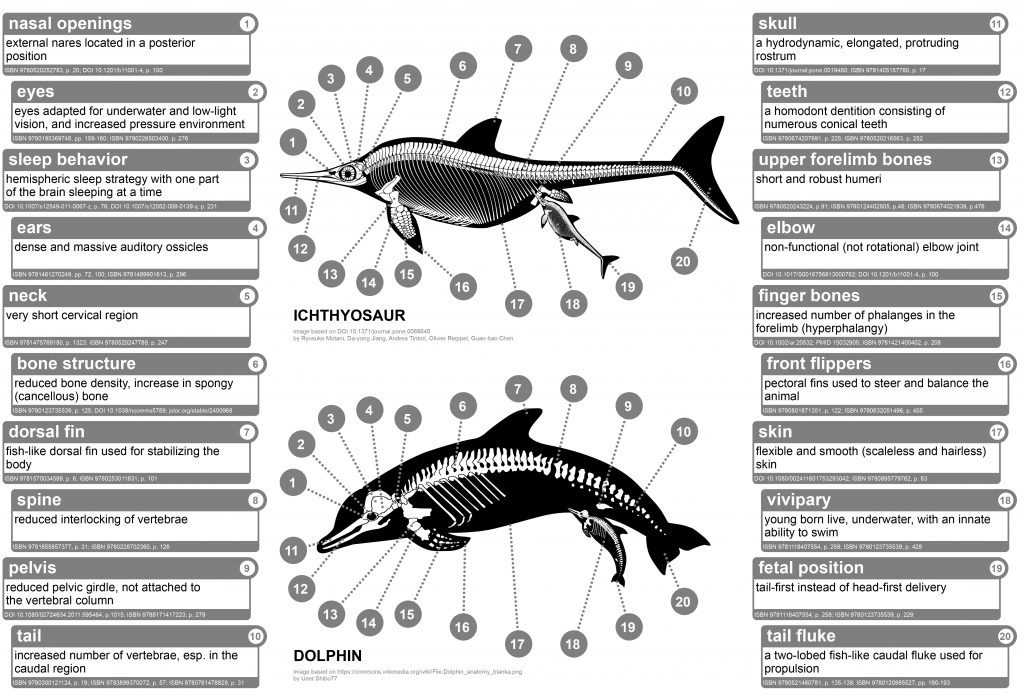
A comparison of features shared by ichthyosaurs and dolphins created by Sceptic view (https://en.wikipedia.org/wiki/File:Ichthyosaur_vs_dolphin.svg; CC BY-SA 4.0).
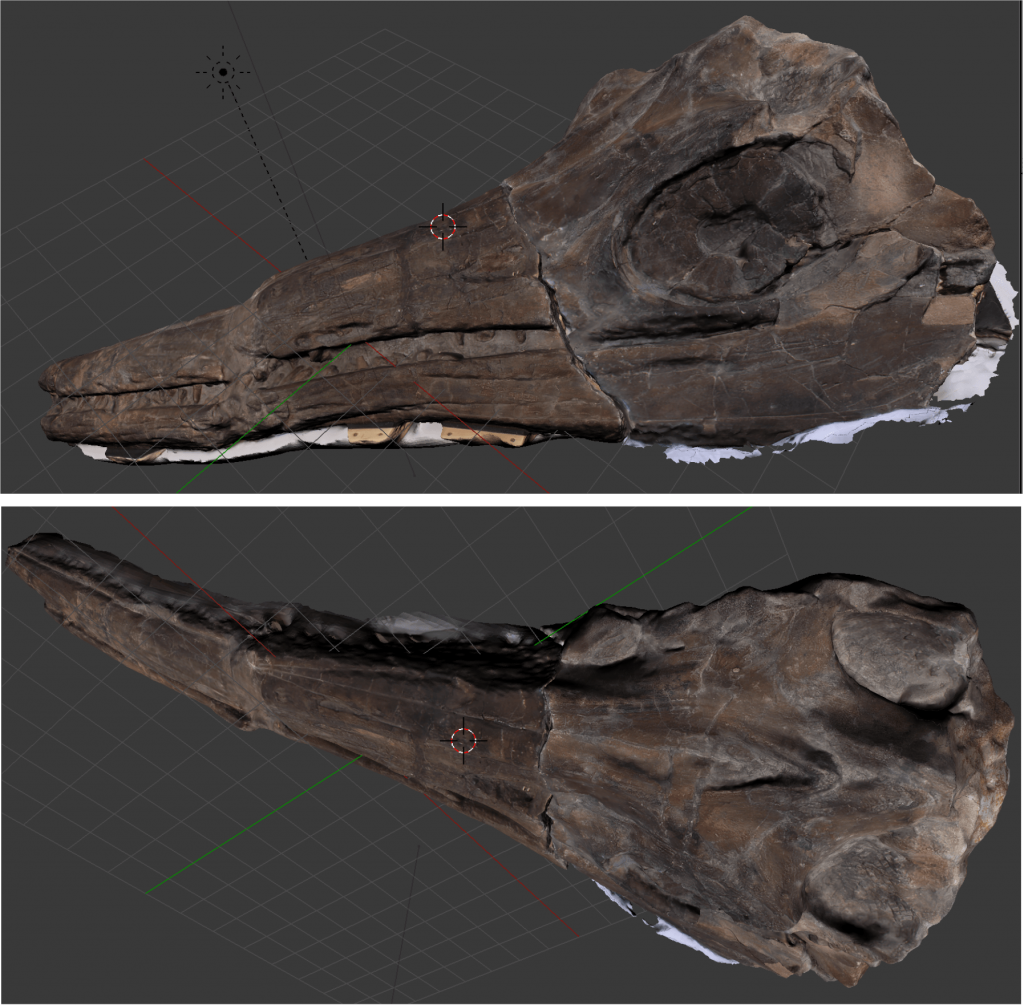
The large skull of Temnodontosaurus, found by Mary Anning almost two hundred years ago. The whole skull is almost 2 m long. As part of Attenborough and the Sea Dragon we used this skull to study the jaw mechanics and biting prowess of Temnodontosaurus. Our results show that the bite force would have been over 30,000 N. To do this we used a combination of CT scanning and surface imaging to make a 3D model that can be viewed from any direction. Here we can see the skull from the left (top) and top (bottom). Images by Benjamin Moon.
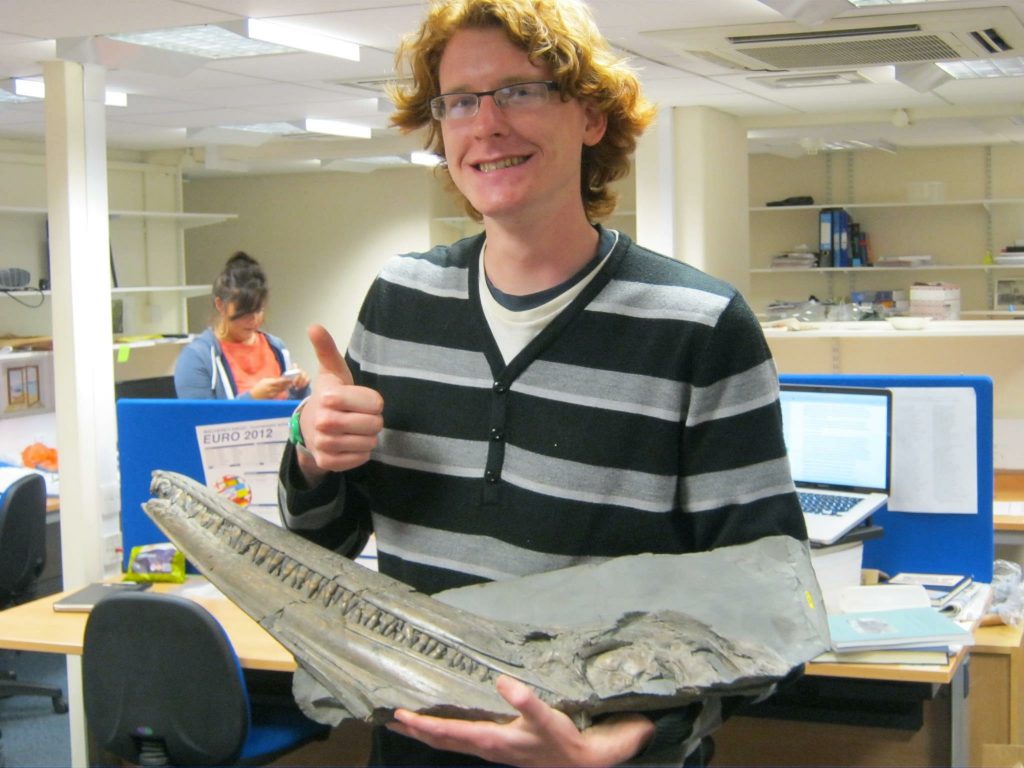
Benjamin Moon holding part of the skull of Brachypterygius extremus, and ichthyosaur from the Late Jurassic of SW England. This was an ichthyosaur that I worked on during my PhD.
Trailer for Attenborough and the Sea Dragon. The episode will air at 8pm (UTC) on BBC 1.
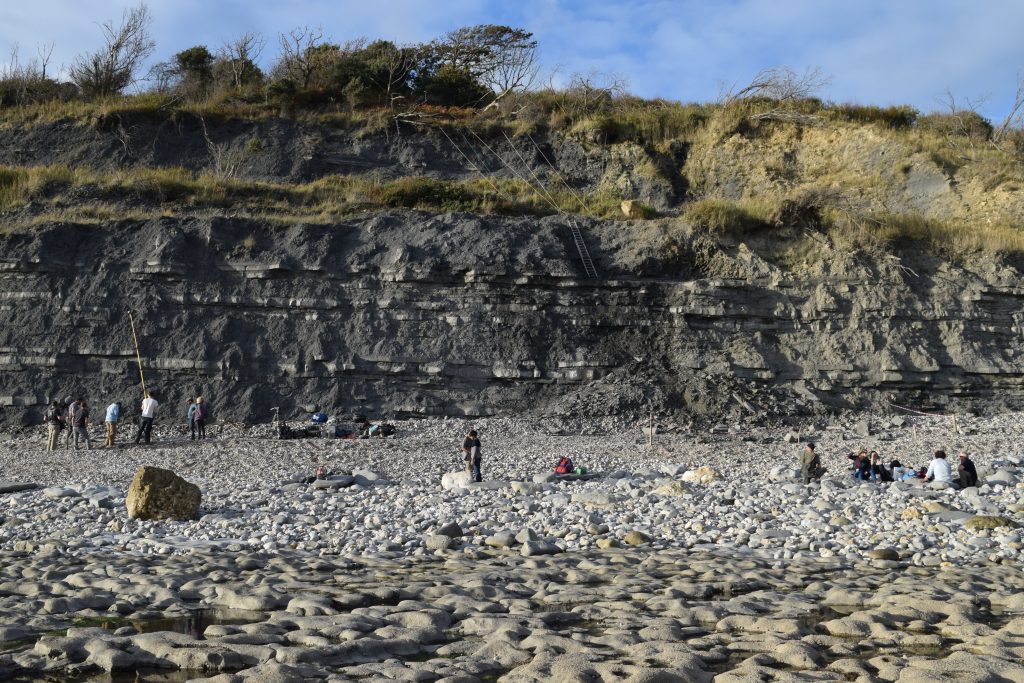
The excavation site at Lyme Regis where the ichthyosaur was removed during filming for Attenborough and the Sea Dragon.
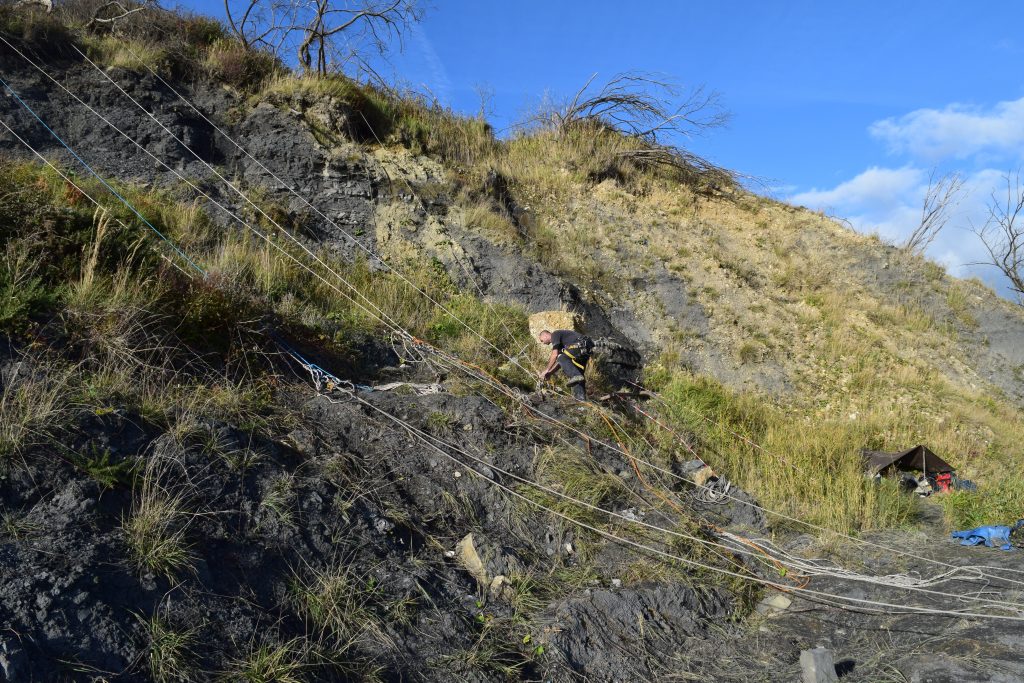
The rope safety team set up the ropes and harnesses used to keep the dig team safe while they excavated the ichthyosaur fossil from the top of a 25-foot cliff.
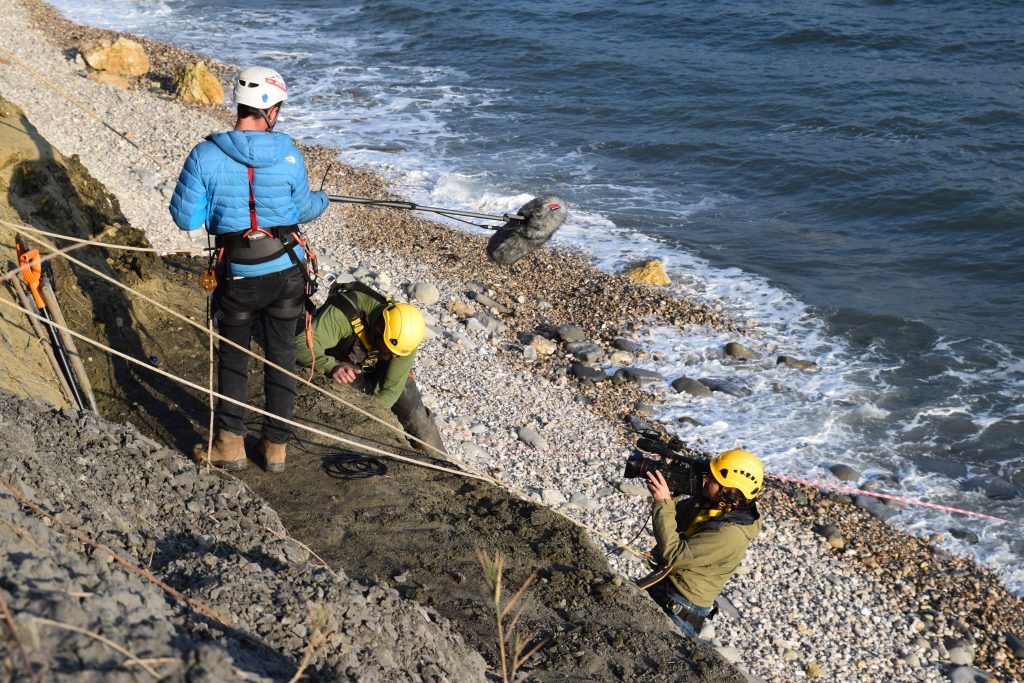
Member of the dig team, Al Moore explains to camera how the ichthyosaur bones are lying in the cliff during the excavation.
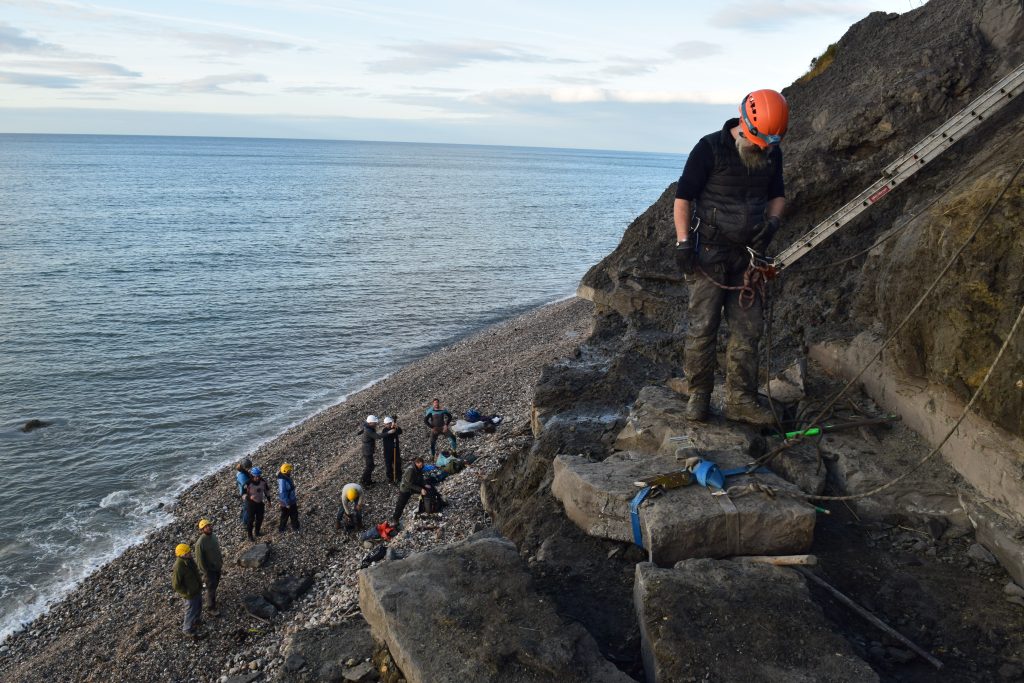
The large limestone blocks containing the Attenborough ichthyosaur are strapped heavily in preparation for them being lowered down the cliff face to a waiting film crew and Sir David Attenborough on the beach below.
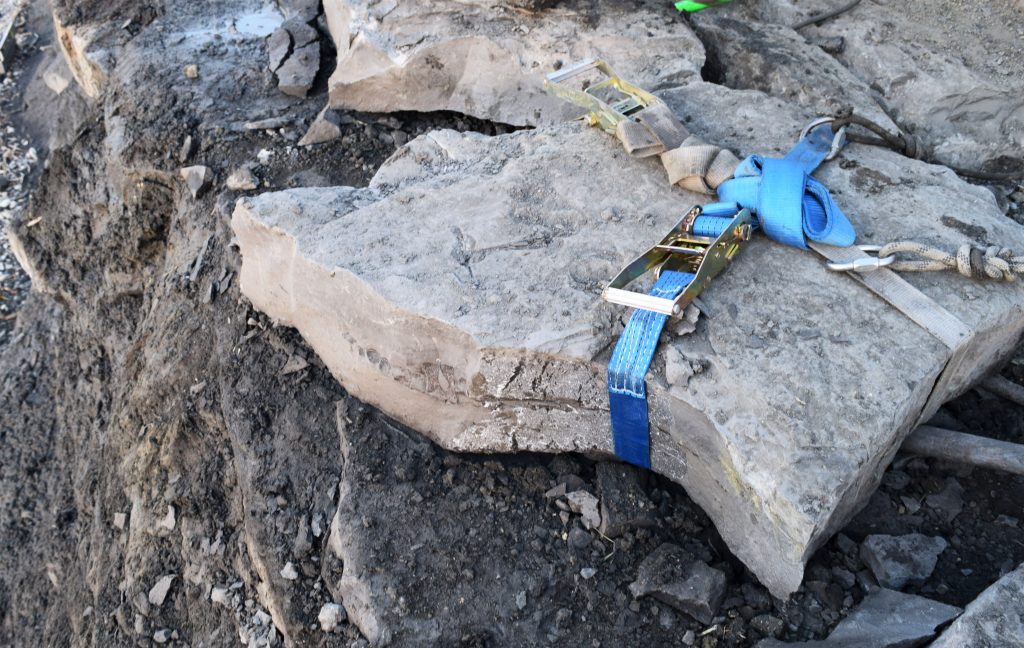
A large limestone block weighing over 200 kg and containing bones of the Attenborough ichthyosaur are strapped ready for lowering down the cliff face to the beach below. The black bones can be seen on the left-hand side of the block.
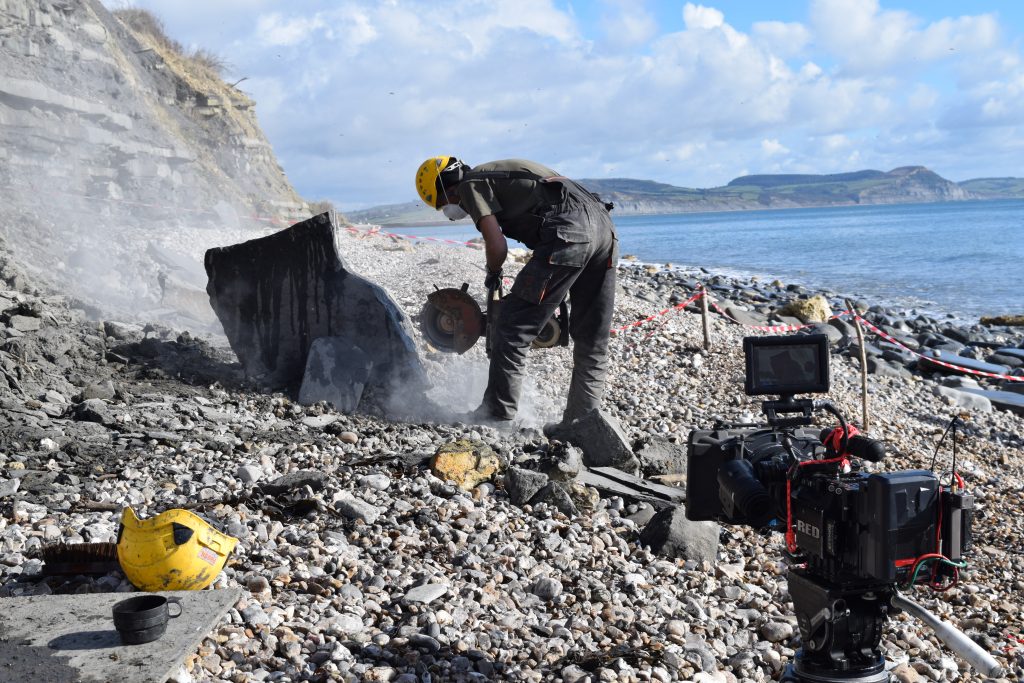
A member of the dig team is filmed using a diamond saw to remove excess rock from the blocks containing the Attenborough ichthyosaur bones to allow them to be removed from the beach.
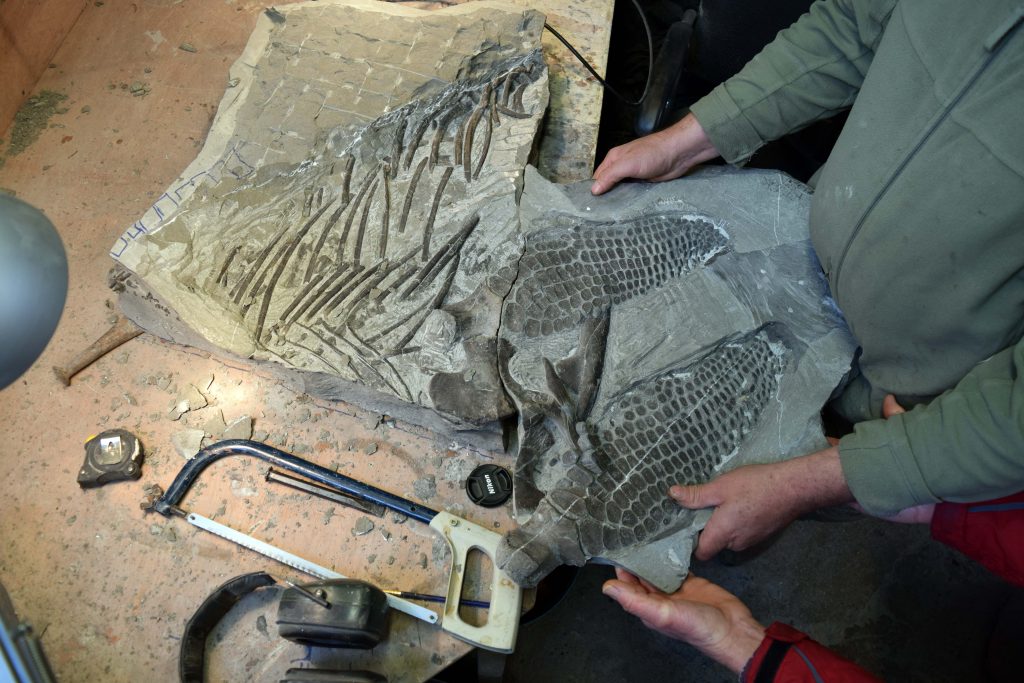
The paddles (front limbs) of the Attenborough ichthyosaur which show a unique morphology and are much larger than any others known for the genus Ichthyosaurus.
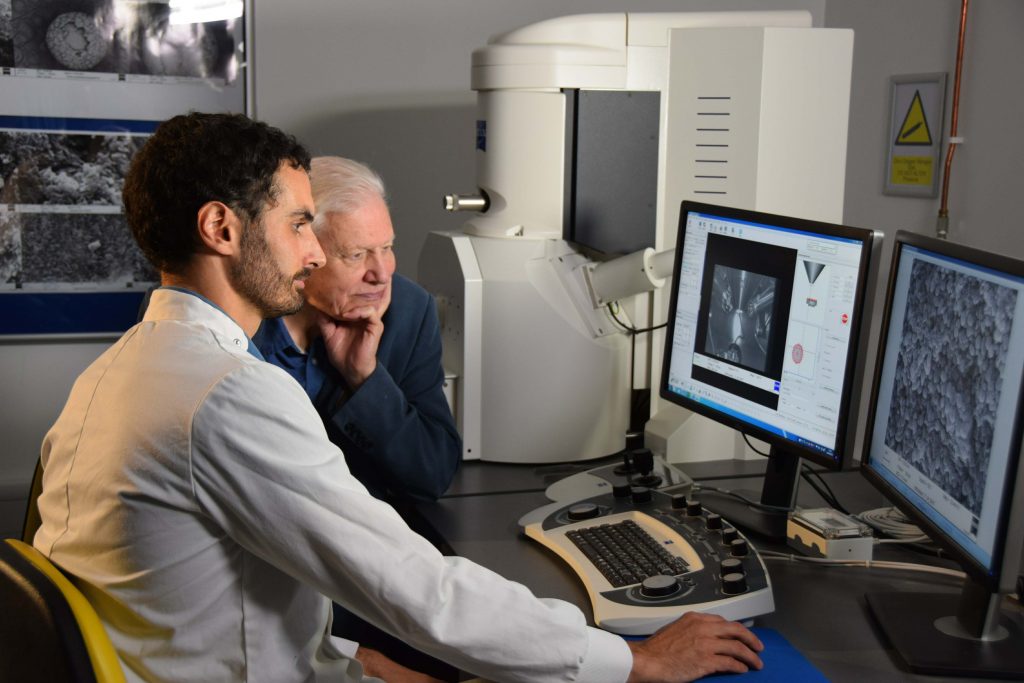
Fiann Smithwick shows Sir David Attenborough the results of his work analysing the preserved skin of the ichthyosaur fossil using a high-powered scanning electron microscope (SEM).
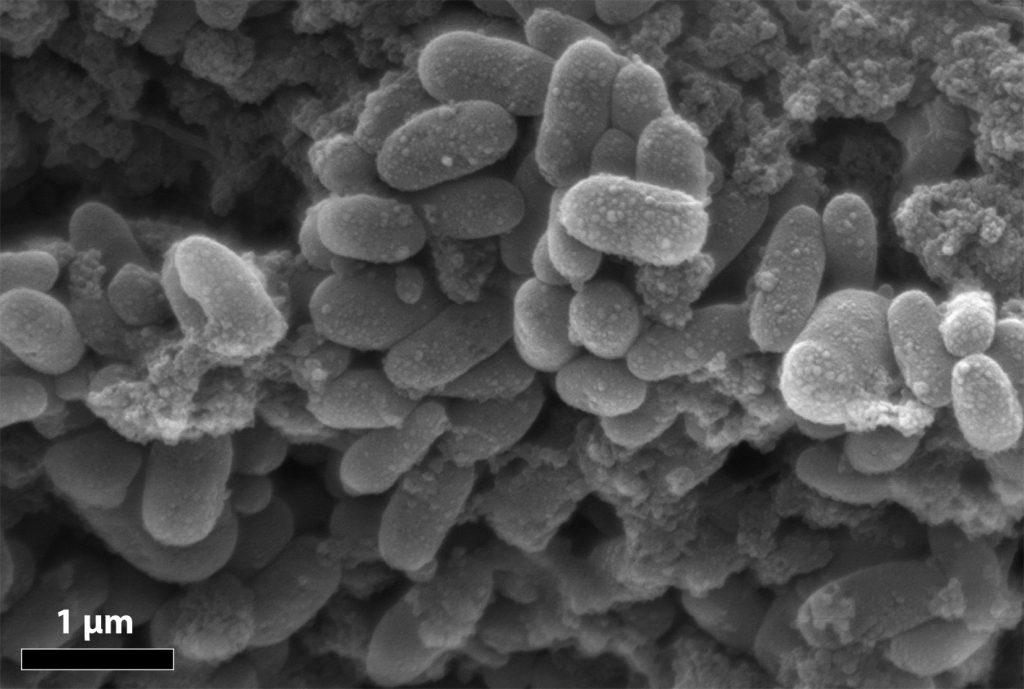
A cluster of well preserved melanosomes found within the skin of the Attenborough ichthyosaur. These melanosomes gave the animal its colour in life.
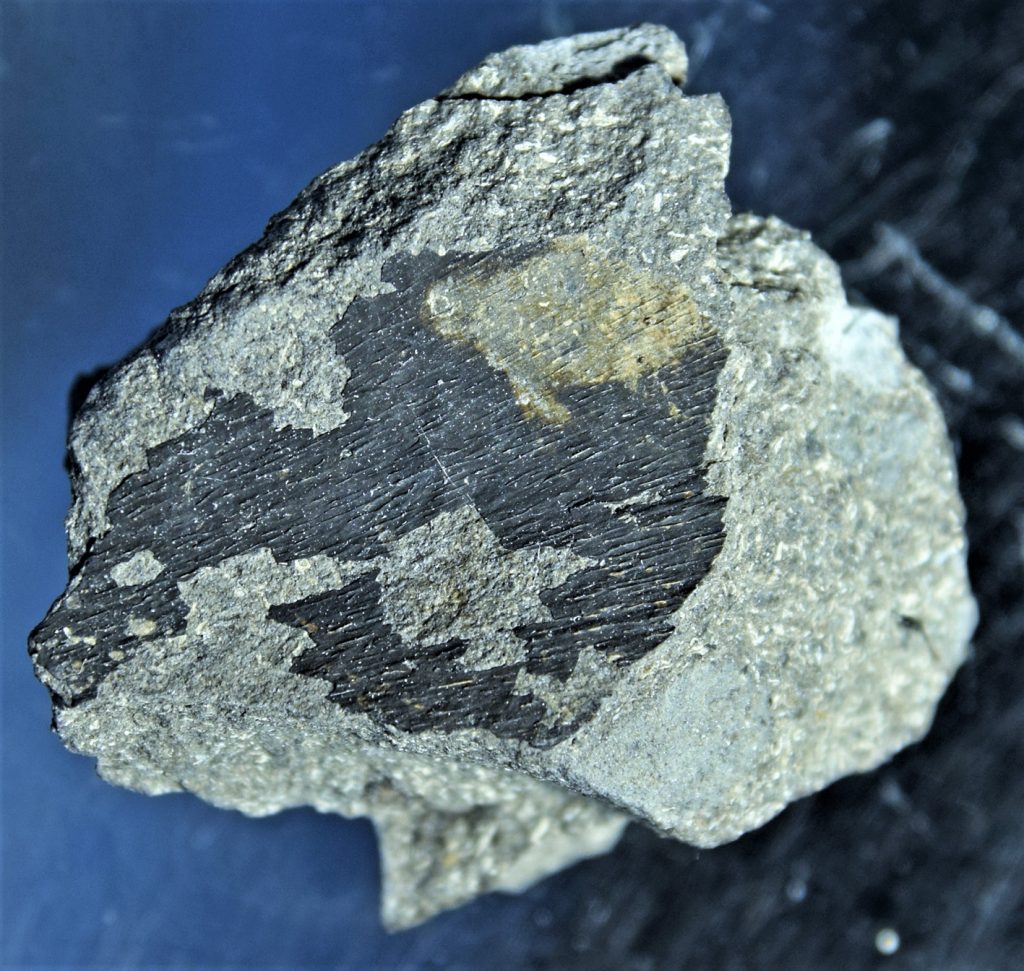
A piece of the skin of the Attenborough ichthyosaur showing dark organic preservation thanks to the presence of well-preserved pigment containing melanosomes.
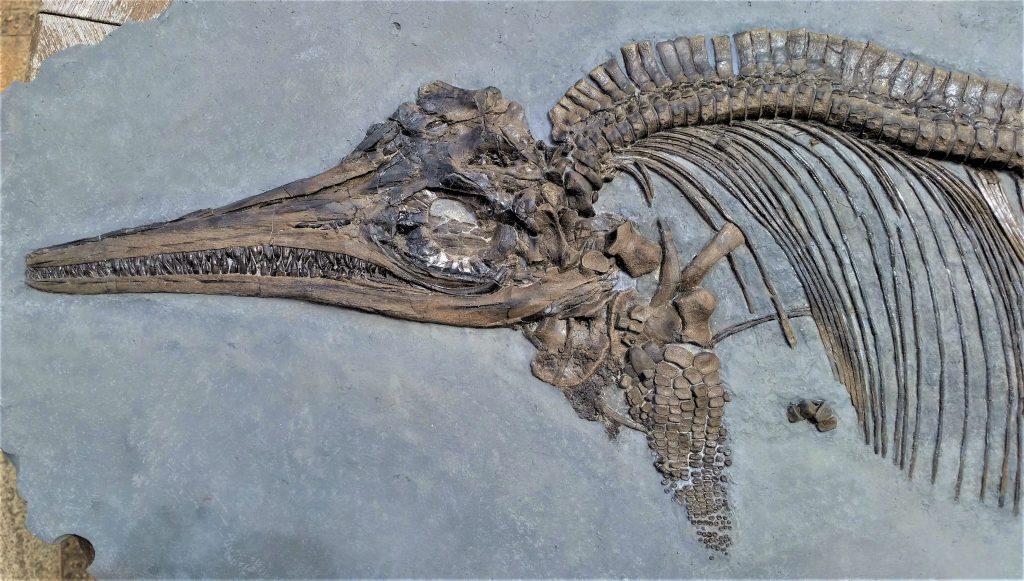
The anterior portion of a complete juvenile ichthyosaur of the species Ichthyosaurus communis found at Lyme Regis by Fiann Smithwick.
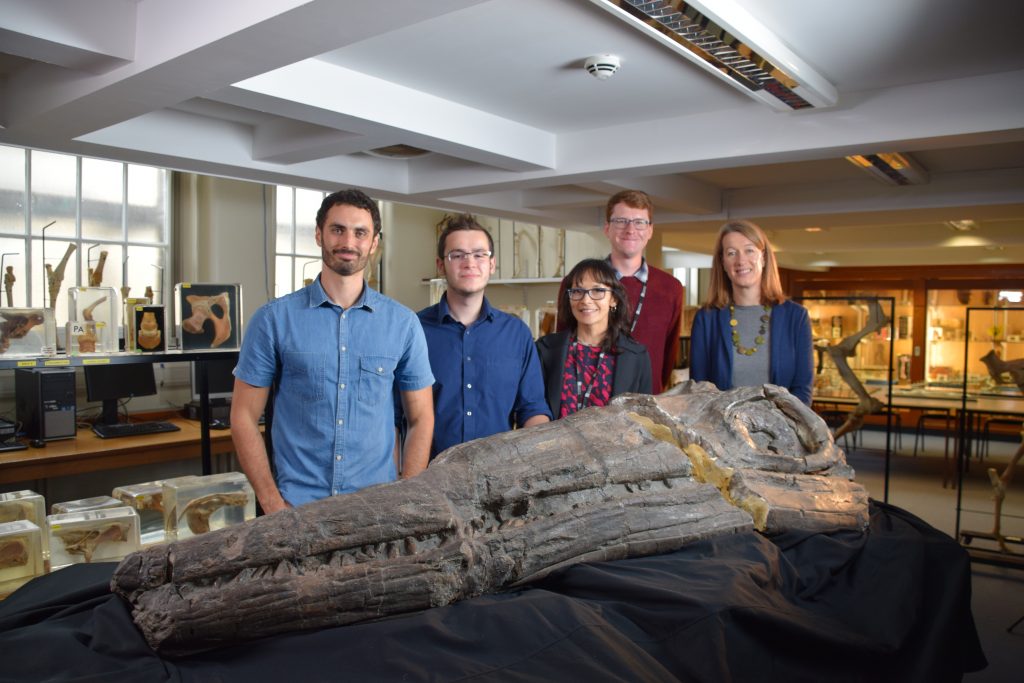
Members of the Bristol University scientific team who investigated the ichthyosaur specimens for Attenborough and the Sea Dragon, alongside a huge Temnodontosaurus skull found by Mary Anning in the 1800s. Left to right: Fiann Smithwick, Jo Flannery-Sutherland, Kelly Vargas, Ben Moon, Emily Rayfield.
Ben’s Blog: https://ichthyosaurs.wordpress.com
Fiann’s Instagram: https://www.instagram.com/fms.fossils
Selected references:
Phylogeny paper: http://www.tandfonline.com/doi/abs/10.1080/14772019.2017.1394922?journalCode=tjsp20
Ichthyosaur CT skull: http://onlinelibrary.wiley.com/doi/10.1111/pala.12174/abstract
Ichthyosaur completeness: http://onlinelibrary.wiley.com/doi/10.1111/pala.12158/full

